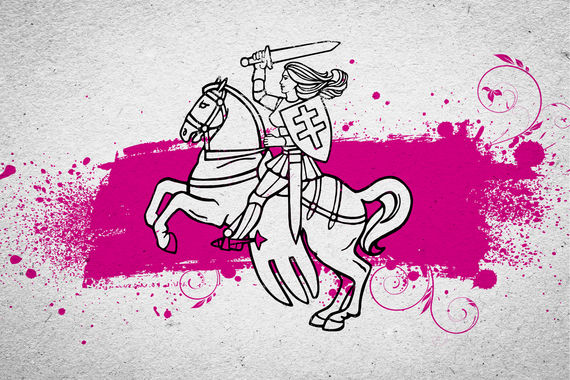Thu Sep 03 2020 · 8 min read
Civic Resistance in Belarus: The Strong Voice of a Tired Country

By Ales Plotka

Belarus held its sixth presidential election on August 9, 2020. For the sixth time, official results announced that Alyaksandr Lukashenka[1] had attracted an unbelievably high level of support. The campaign was marked by repression against potential challengers, one of whom, Syarhey Tsikhanowski,[2] had been imprisoned on trumped-up charges. Syarhey’s wife, Svyatlana Tsikhanowskaya[3] refused to let Lukashenka get away with it and put her own life in jeopardy by registering as a candidate herself; in doing so, she became the symbol for a nation anxious to shake off the designation of the “last dictatorship in Europe.”
For almost a month now, Belarusians have kept up their civic resistance against Alyaksandr Lukashenka’s electoral fraud, despite witnessing police brutality against peaceful protesters that has included murderous acts. This unprecedented violence against his own people, including stun grenades, brutal rounding up of people in suburbs and Internet blackouts, has only served to sustain the continuous outpouring of people onto the streets. The crowds have been compared to the democracy movement in the spring of 1996, but their longevity is unparalleled in Belarusian history. How did this become possible in a society known for its calm and obedience?
The Female Triumvirate
The main question for many people from abroad is how Tsikhanouskaya, a relative unknown in Belarusian politics only a year ago, was able to rally such a large following across Belarus in such a short time. She was not alone but joined by two other women who were also tied to candidates that were not permitted to run their own campaign. Veronika Tsapkala,[4] the wife of an opposition candidate whose nomination signatures were deemed to be invalid by the electoral commission, and Maria Kalesnikava,[5] the campaign manager of another detained candidate Viktar Babaryka (Viktor Babariko) threw their support behind Tsikhanowskaya and formed a triumvirate which has mobilized all levels of Belarusian society.
The success of this mobilization is thanks to two main reasons. The first is that the people are fed up with a Soviet-type social contract, which does not work no matter how much Lukashenka’s propaganda tries to defend it. It is said that the system delivers quality healthcare; however, one can’t be cured without private clinics or giving bribes. Foreign currency deposits at banks are dwindling but television announcers repeat lines about financial stability. One of the clearest examples of the exploitative nature of the state is the so-called “parasite tax,” where it is the unemployed who have to pay a special tax to the government, in contrast to other governments that increased state assistance during the COVID-19 pandemic. The government’s response to the pandemic was a major game-changer for ordinary people. Instead of taking the precautionary measures we observed in other European states, Belarus hid the real numbers and let the population fend for itself. That was a crucial moment when the veil was lifted and the majority saw that there is no “social” healthcare and the regime had only lies to offer. Some compare it to the moment in Armenia when it became clear that Serzh Sargsyan had no intention of leaving after two terms, that his 2015 constitutional referendum had indeed been wrapped in lies from the beginning.
The second reason is the new type of opposition leaders and the new narratives they use. In the past, democratic leaders who opposed the regime used messages that focused on human rights and democracy, which didn’t resonate with ordinary people’s demands for a better life. In stark contrast, the triumvirate has concentrated on pocketbook issues and mobilized the community into showing, for all to see, the real percentage of people who voted for change, through legal channels such as exit polls and wearing white bracelets. Despite mass falsifications and the absence of domestic and international independent observation, society has realized that people who are against the regime are now in the majority.
The three female faces of the 2020 movement have also changed and weakened Lukashenka’s rhetoric against his rivals. The traditional alpha-style of a strong authoritarian leader who blames his opponents with vitriolic attacks could not be used anymore and he had to concentrate on general messages of stability and omnipresent external enemies lurking everywhere. But this shift went hand-in-hand with a dramatic fall in Lukashenka’s public image. The man that Soviet-oriented stalwarts in Russia and Ukraine (but not in Belarus itself) call “Batska” (father) turned to “Dzed” (old man). Another nickname “Sasha 3 Percent” mocks the fraudulent election result, similar to a comment that Serzh Sargsyan made in 2018 that Pashinyan represented only 7% of the electorate.
A Victory of National Symbols
Police brutality has been unprecedented after the elections. People are being tortured and beaten in prisons and this is hugely different from street confrontations where fights and clashes do sometimes happen. Several deaths, threats of rape, cell overcrowding (keeping 50 people in a cell big enough for only six): this is the face of the Belarusian police. Shocking photos of these practices have only encouraged more people to come out onto the streets. They needed a common symbol of resistance.
The historical Belarusian white-red-white flag has become one. The flag has existed for many centuries and was an official flag of the republic after the restoration of independence in 1991. In 1995, Lukashenka restored the flag from the Soviet period and the historical one was discouraged by authorities and came to represent opposition. It was not fully banned, but people carrying it were often attacked by police. This demonization of the flag has come back to haunt the regime. At this crucial moment, thousands of people have chosen it as a symbol of their values: for democracy and against dictatorship. After years of being banned the number of national flags at the protests astounded even the long-standing opposition.
The revolution of senses and symbols has already been won.

Vieršnica, feminized version of historical coat of arms, (c) Ales Plotka/ Julia Halavina.
This symbolic victory has been built on a decade of grassroots initiatives to promote the Belarusian language and culture, and preserve the national identity of the most Russified country of the former Soviet Union. The main one has been the civic campaign “Budzma Belarusami!” (“Let's be Belarusians!”), whose cultural projects in 2010-2015 (later continued by symbal.by) became a form of cognitive psychotherapy for the whole nation after the repressions and post-electoral depression of 2010.
Role of the Belarusian DiasporaAnother factor in this year’s unpredicted resistance is the unequivocal support and consolidation of the Belarusian diaspora. Several millions of Belarusians living abroad have become a crucial part of solidarity fundraising. The fundraiser By_help has already raised about $3,000,000 for those detained and injured. Solidarity Fund has raised almost $2,000,000 for those who have been fired from their jobs and repressed for speaking out. A volunteer initiative named Belarus 2020 – Exit Polls at the Embassies managed to monitor the results of the elections in 23 countries and 27 polling stations. The results were shocking for the regime: more than 80% of overseas voters chose Tsikhanowskaya. Demonstrations of solidarity are continuing to take place in many countries and have attracted serious attention from European leaders.
The Russian Factor in a Transfer of Power
The never-ending marches on the streets continue and the strikes are ongoing. The authorities try hard to stop them as they understand the pivotal role a mass-strike can play. The question of the transition of power is discussed but seems to be premature. There are no obvious signs that the current ruler is ready for any kind of dialogue. The protests will have to continue to weaken the authorities’ image and self-confidence before that happens.
Russian influence is traditionally an important factor. As the new round of international sanctions takes effect, Lukashenka’s isolation and dependence on Putin is growing. Without doubt, the Russian President (keeping in mind the Yanukovych scenario in Ukraine) can persuade Lukashenka to start negotiations with any player representing the Belarusian people. One thing is clear: Russia wants to keep Belarus within its sphere of influence and will not support any challenger that they believe will foster anti-Russian sentiment throughout the country.
The European reaction has been much more dynamic than usual, as the overwhelming majority of the Belarusian people are giving a clear message. Belarus continues to attract headlines all over the continent as a more pro-European direction for the country comes into view; if not by its leader, then by the nation. However, the inaction of the EU and US when Ukraine and Georgia were dealing with Russian invasions is a strong reminder to the Belarusian people not to fall under any delusion that Western help would be forthcoming in the event of a worst case scenario from the East. On the other hand, Russia will hardly want to get stuck in a second Afghanistan, which this partisan republic could easily become.
The main catchphrase this month in Belarus is “We don’t want a Ukraine scenario, we want an Armenia scenario.” The core value is a non-violent transfer of power. Many unpredicted things have already come to pass. Who knows, maybe Belarus can find a way to do it even better than Armenia. Direct comparisons are never exact because every country is unique, but the speed of change in the wider region shows one thing clearly: people have had enough of the status quo.
The author would like to thank Corinne Leech for her help in putting together this article.



EVN Report welcomes comments that contribute to a healthy discussion and spur an informed debate. All comments will be moderated, thereby any post that includes hate speech, profanity or personal attacks will not be published.